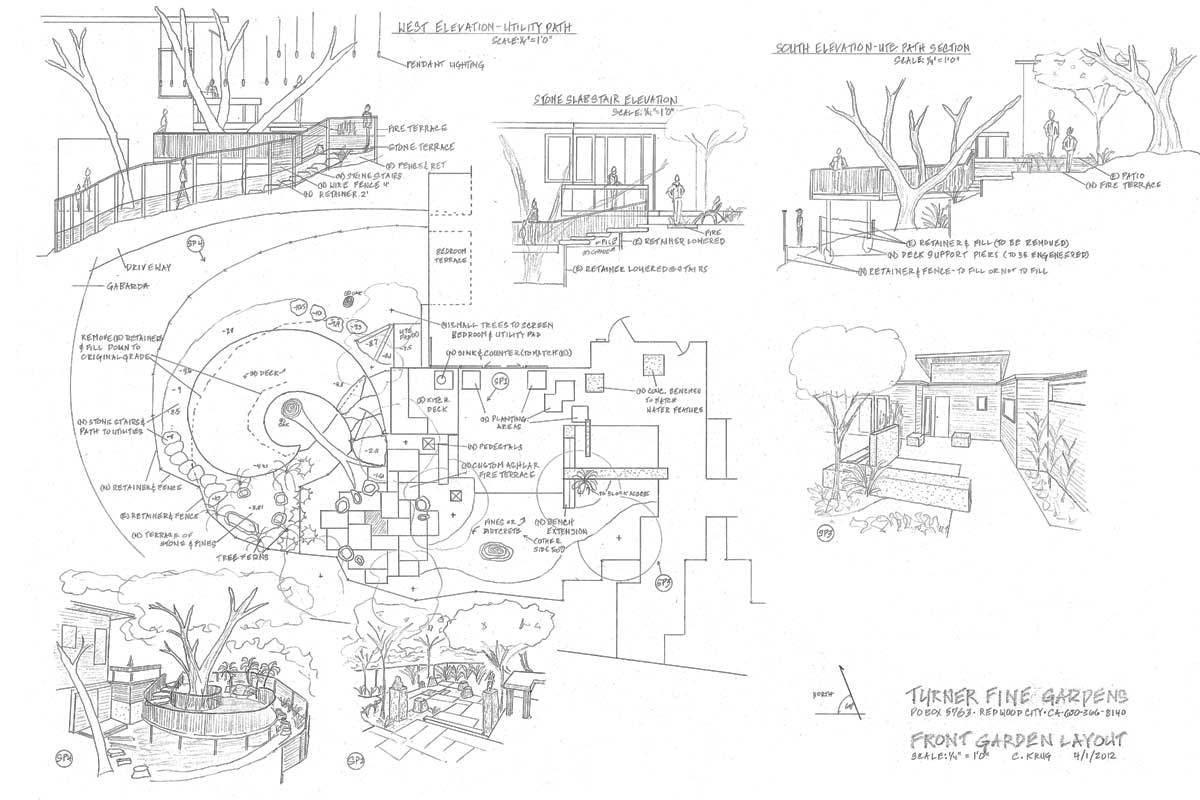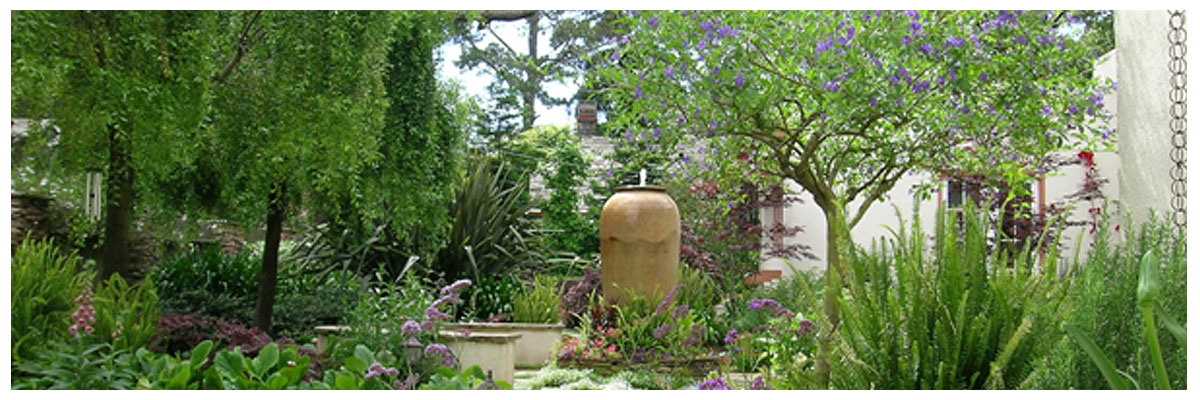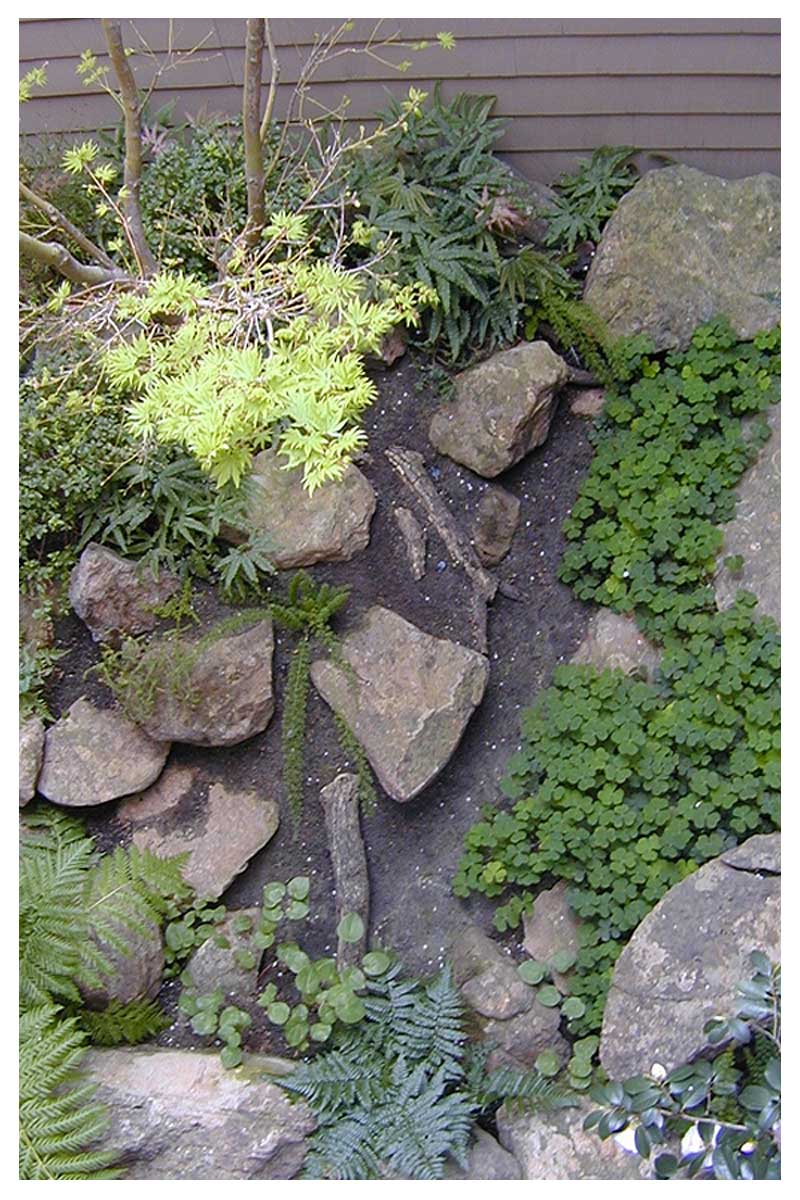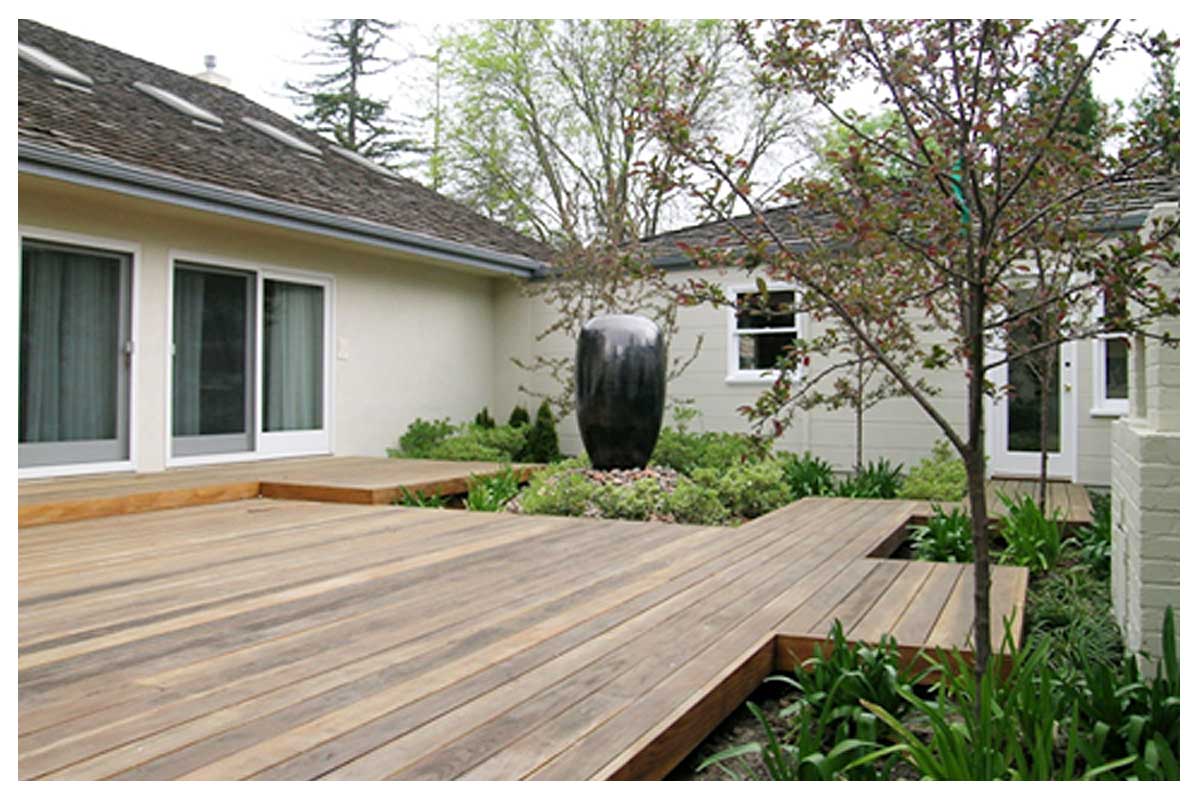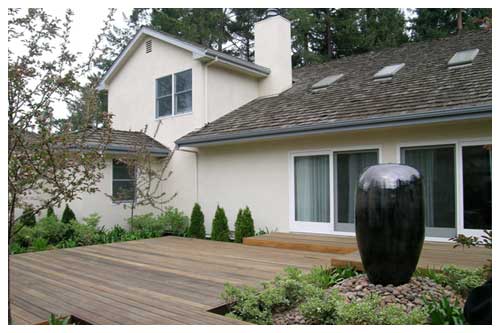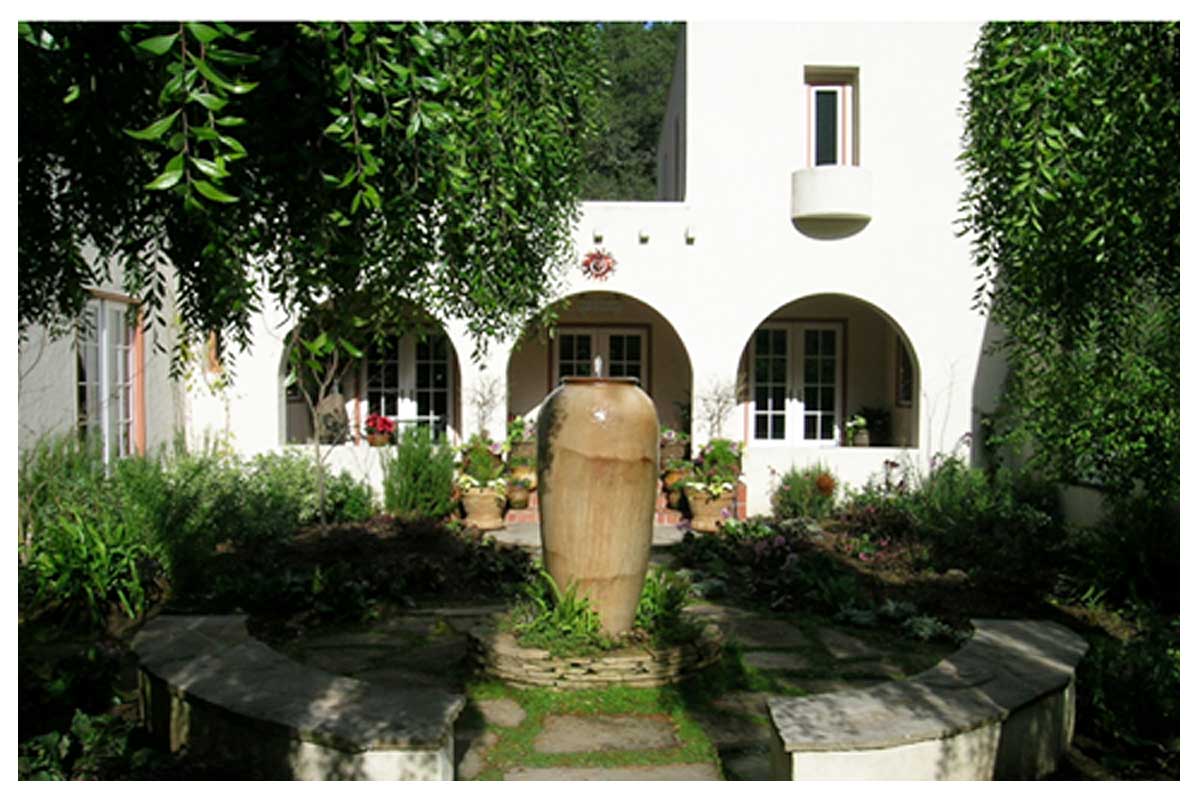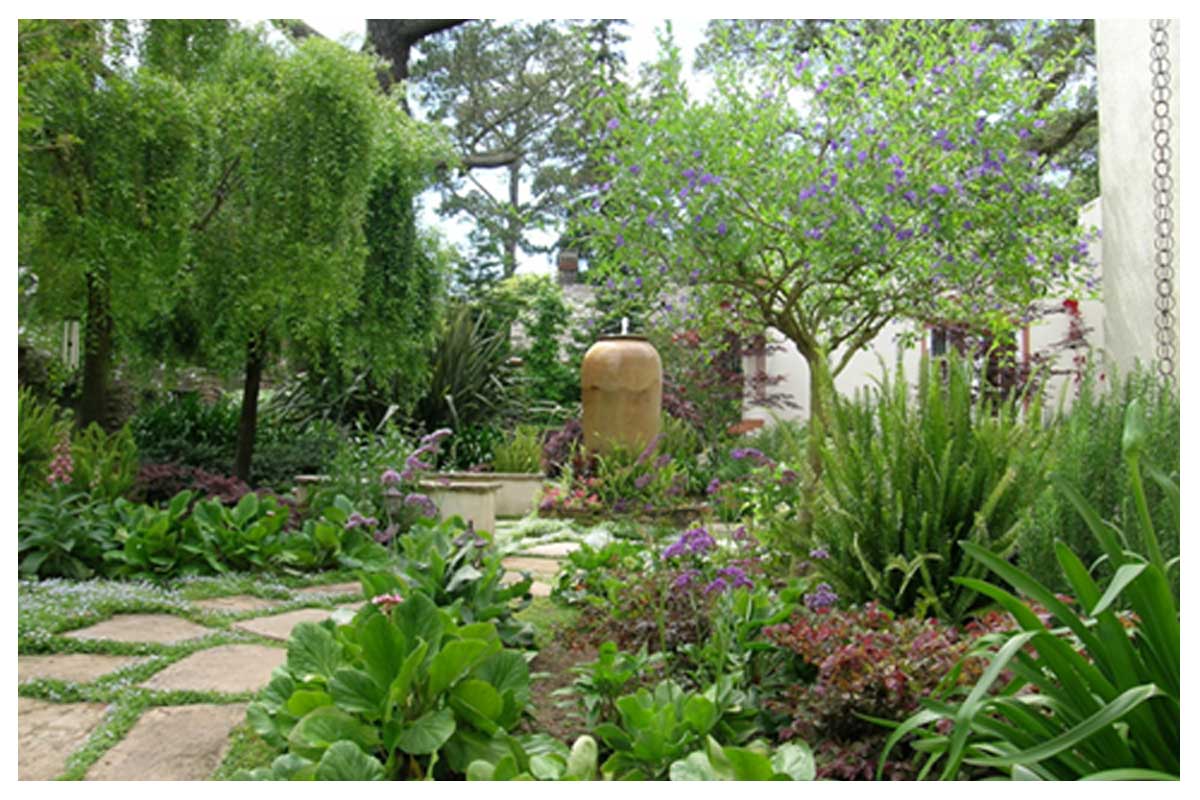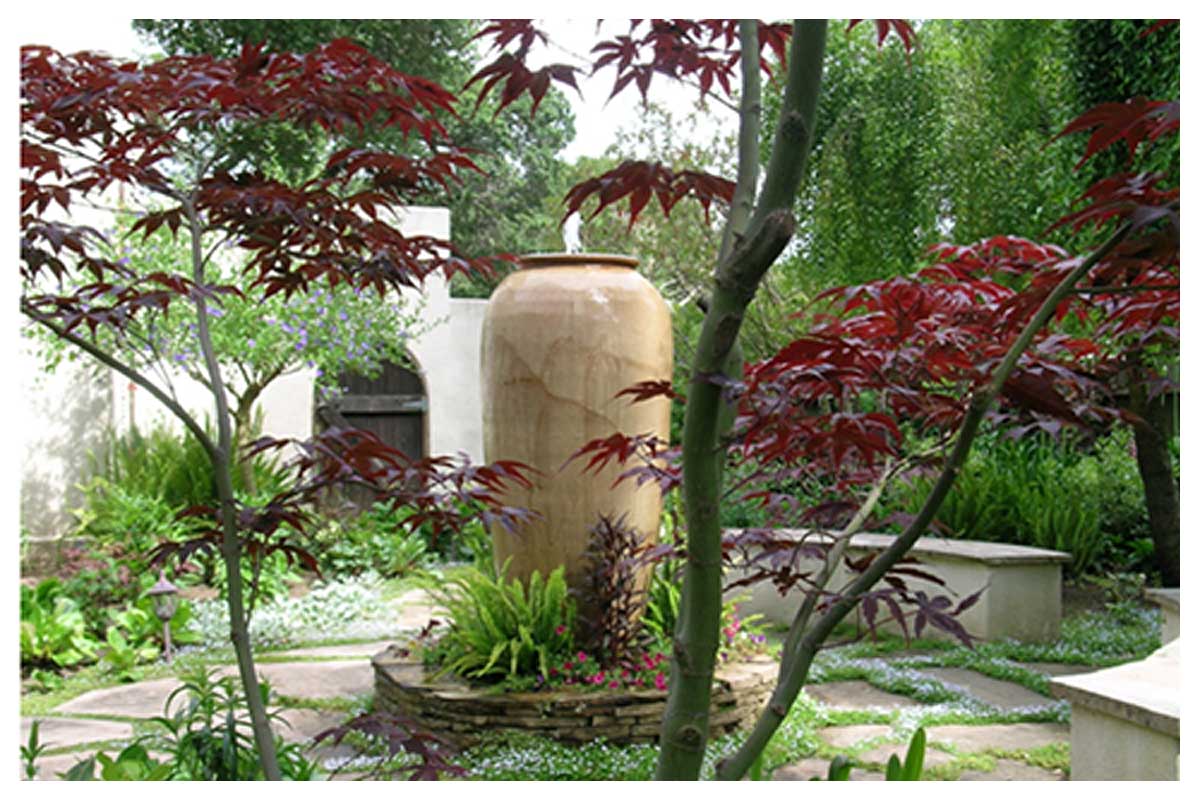Process
Initial Consultation:
In this meeting, I spend a couple of hours interviewing you and your spouse with the aim of understanding your style and your lifestyle. To this meeting you should bring images or samples of things that you like or don't, things to which you have a definite emotional response. They do not need to be perfect for your garden, because I will use them as lenses through which to understand your style and emotional responses to the designed environment. I ask that you have a scale plan of the property showing the footprint of any structures and important shrubs and trees. Once the interview is completed, then we lay trace over your plan, do some relationship diagrams and try a few things out. The completed design is usually very similar to one of the concepts created here. This consultation will not need to be repeated if later you decide to have me work on other projects.
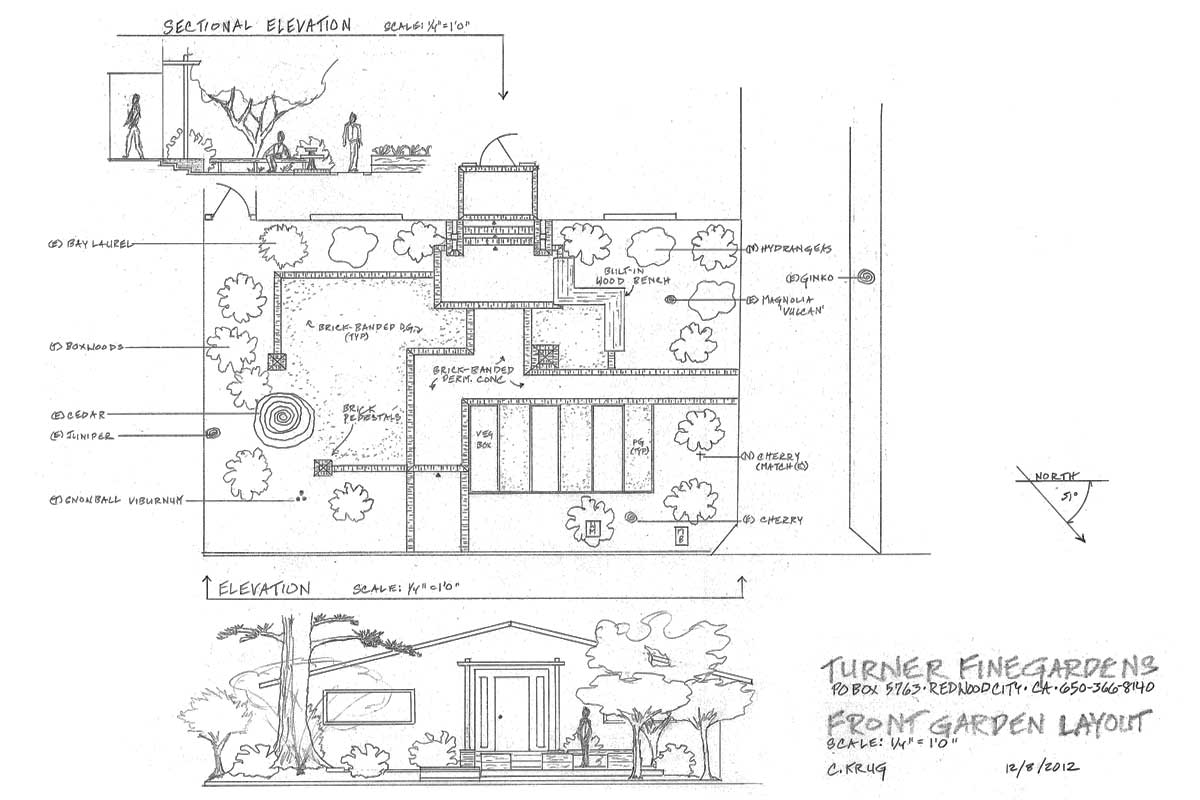 Concept Development:
Concept Development:
The concept from the initial consultation is developed and refined. A complete layout is produced, in your case, just structural planting and maybe some adjustments to the lawn shape. An initial planting plan and palette are produced, and structural plantings and comments on some details are shown on the plan. A typical example of this plan, called the landscape layout, is shown above. For comparison, at right is shown the construction drawing that follows once the concept is accepted.
This is the most essential part of the process and many clients build their landscapes from this drawing. You usually can get a landscaper to bid from this plan. Depending on how you decide to proceed with installation, you might want some of the additional construction drawings listed below.
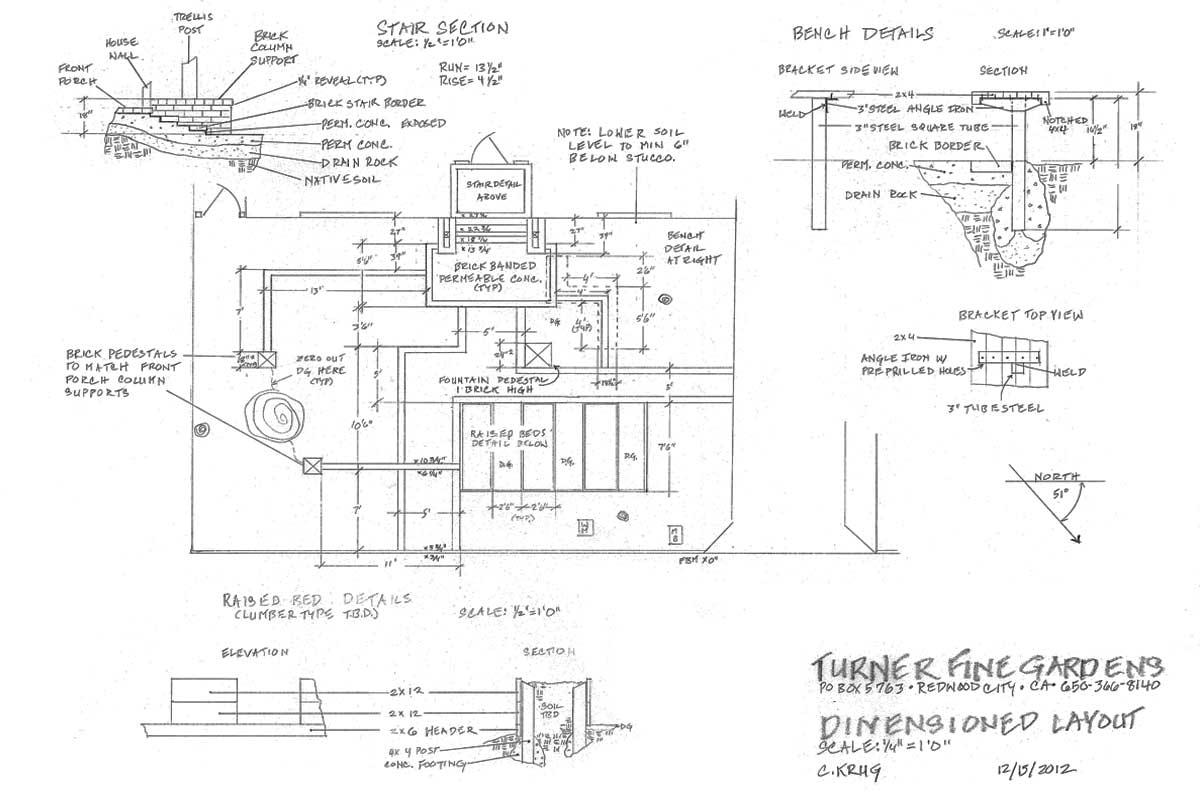 Revsions:
Revsions:
If any, these are usually minor and become part of the construction drawings. Rarely, significant changes call for revision of the concept before considering construction drawings.
Construction Drawings Hardscape:
This is the plan that incorporates any changes made to the original concept, and shows all dimensions and other specifications needed for a landscaper to bid and install the constructed elements of the plan, such as elevations and materials.
Planting:
A complete palette and all plants are specified. This usually involves research on specific plants. Here’s a recent example for a small section of a garden in Los Altos.
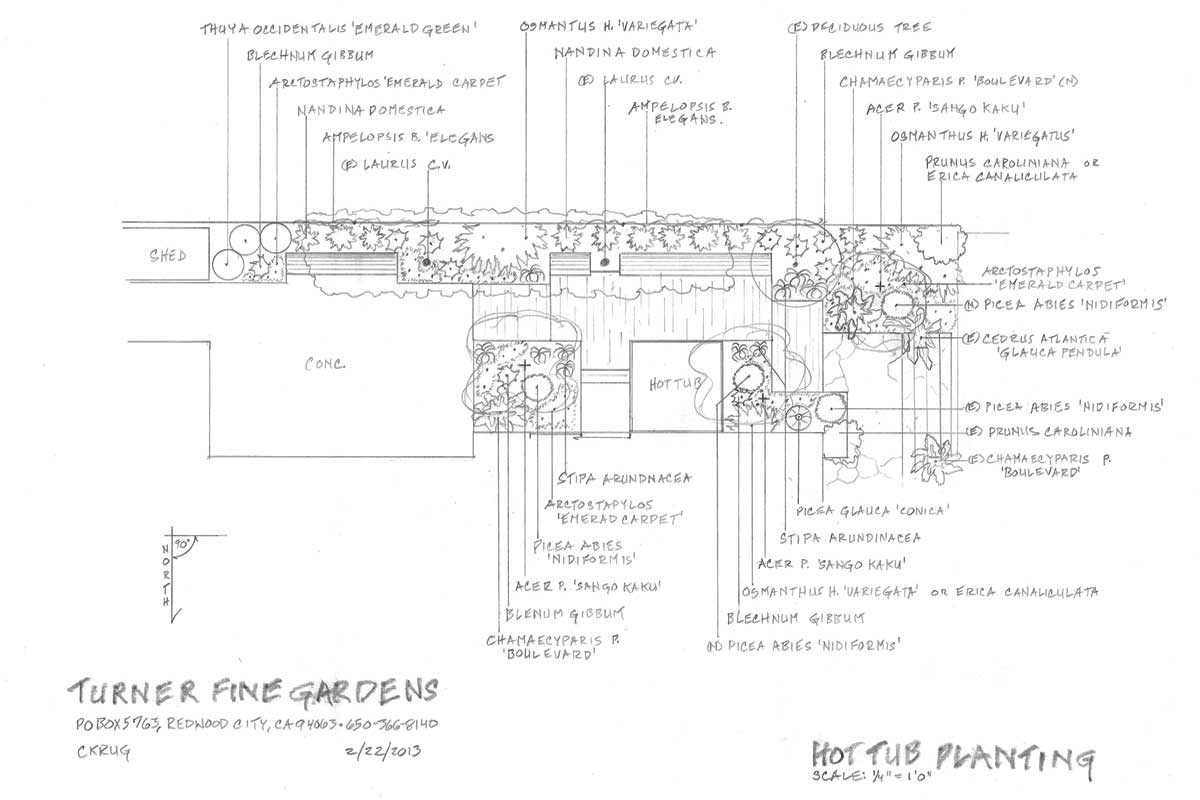 Irrigation:
Irrigation:
I cannot recommend this highly enough. If it is drip, then the design is simple. If it is spray, then it should be calculated and specified. Many landscapers prefer to do the irrigation plan themselves, but my years as a gardener trying to care for such systems has made me suspicious of such economies. Through trial and error, I have learned what sorts of irrigation work and are maintainable, and what applications are appropriate for a given zone. Below is an example. This one doesn’t, but I often specify pipe routing and valve locations as well.
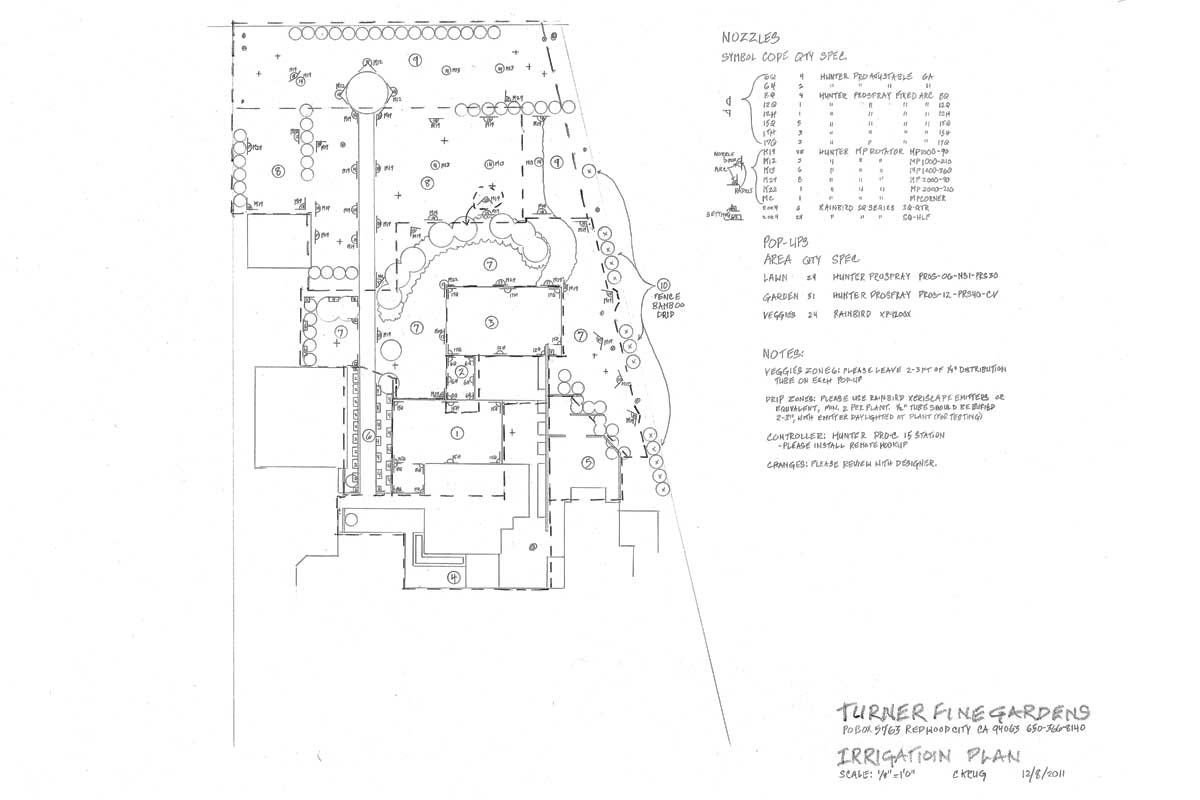 Lighting:
Lighting:
The lighting plan for me is simple and usually drawn over a copy of the planting plan, as shown at right. In some cases, it is wise for me to specify details and calculate wire sizes and voltage drop as shown below.
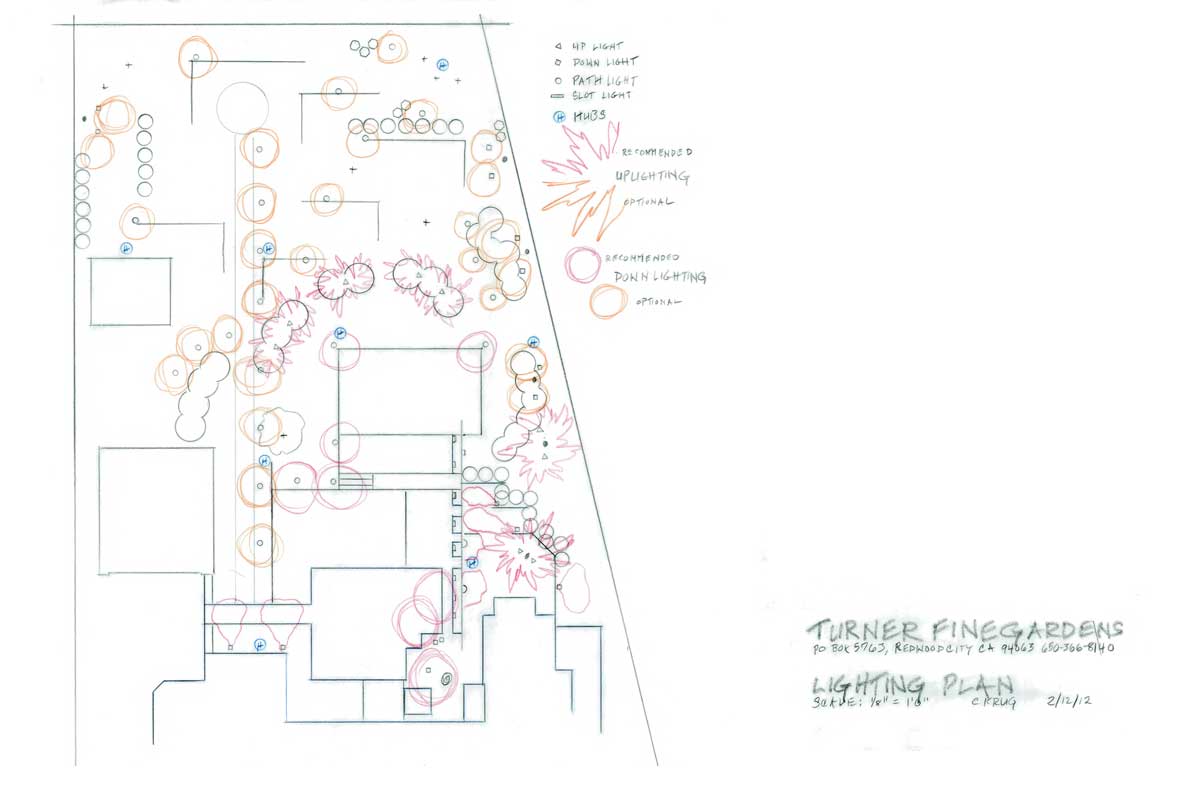 Construction details:
Construction details:
You’ll only need these if you decide you want a custom feature, like a fountain, a fire pit, or an arbor, and then only if there is some complexity to the construction.
Construction Oversight:
This depends upon quality and specificity of the drawings (Did we produce construction details? Staked and referenced plans?), the skill of the contractor, and your participation. With an experienced landscaper, it can be as little as an hour or two a week, plus some longer visits for such things as plant placement and lighting adjustments. I offer the most value by checking the layouts, placing plants, supervising the installation of boulders, if any, and informing decisions you face during construction.
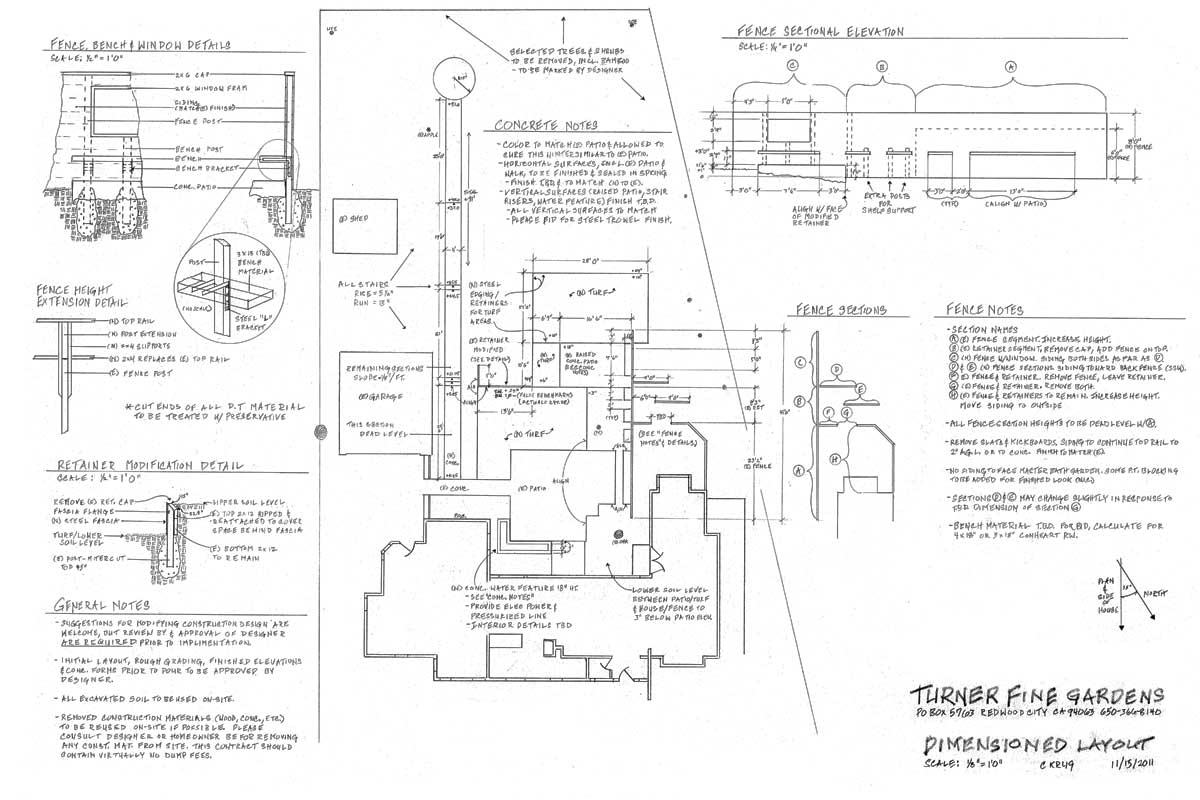 As-Built:
As-Built:
A very useful tool that can pay for itself easily if you ever need to find something that is hidden under the ground. In your case, this will probably include only irrigation and maybe lighting, including where the wires are run and lamp specifications for fixtures.
More:
I can also produce perspectives and elevations as needed to help you understand concepts. This drawing has a bit of everything on it to give you some idea of what’s possible.
